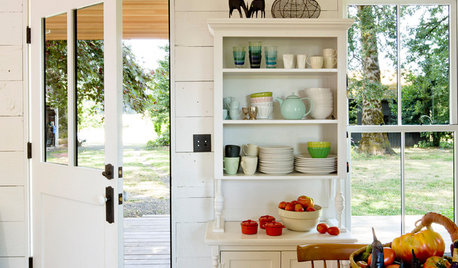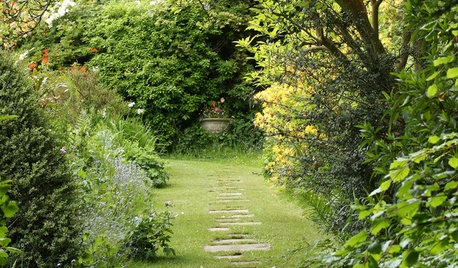Can one have too much air?
Rio_Grande
10 years ago
Related Stories

HEALTHY HOMEA Guide to Indoor Air Purifiers
Get the lowdown on air filtration systems for your house and the important ratings to look out for
Full Story
DECORATING GUIDES10 Ways to Hide That Air Conditioner
Feeling boxed in designing around your mini-split air conditioner? Try one of these clever disguises and distractions
Full Story
HOUZZ TOURSMy Houzz: Mod Finds Create a Fashionable Air in Toronto
Iconic midcentury furniture mixes with original artwork to bring a couple's light-filled one-bedroom apartment to life
Full Story
REMODELING GUIDESWake Up Rooms With the Power of Fresh Air
Even the trendiest interior designs can feel stale when your home is in permanent lockdown. Look to windows and doors for the solution
Full Story
HEALTHY HOMEGet Cleaner Indoor Air Without Opening a Window
Mechanical ventilation can actually be better for your home than the natural kind. Find out the whys and hows here
Full Story
GARDENING GUIDES3 Easy Ways You Can Garden for Nature
Your choice of plants can help wildlife while cleaning the air and water
Full Story
COLORBenjamin Moore Floats Breath of Fresh Air as Its Color of 2014
Touted as a new neutral, this baby blue can stand on its own or support bolder colors. Here's how to use it
Full Story
ENTRYWAYSSingle Design Moves That Can Transform an Entry
Take your foyer from merely fine to fabulous with one brilliant touch
Full Story
HOUSEPLANTSOne Pot, One Big Shot of the Tropics
Give your rooms exotic flair in a single stroke. Tall Kentia palm fits the tropical bill beautifully
Full Story
DECORATING GUIDESSee How One Feature Can Make a Room Captivating
A wow piece is essential for interiors with impact. These ideas help you make a statement in the strongest way possible
Full StoryMore Discussions






PupillaCharites
PupillaCharites
Related Professionals
New Bedford Landscape Architects & Landscape Designers · Tempe Landscape Architects & Landscape Designers · Kenmore Landscape Architects & Landscape Designers · Mitchellville Landscape Architects & Landscape Designers · Piqua Landscape Architects & Landscape Designers · Woburn Landscape Contractors · Edmond Landscape Contractors · Kahului Landscape Contractors · Kearny Landscape Contractors · Lynwood Landscape Contractors · Medford Landscape Contractors · Nutley Landscape Contractors · Salem Landscape Contractors · Smyrna Landscape Contractors · Ferguson Landscape Contractorsgrizzman
hardclay7a
willardb3
Mycle2313
PupillaCharites
Mycle2313
PupillaCharites